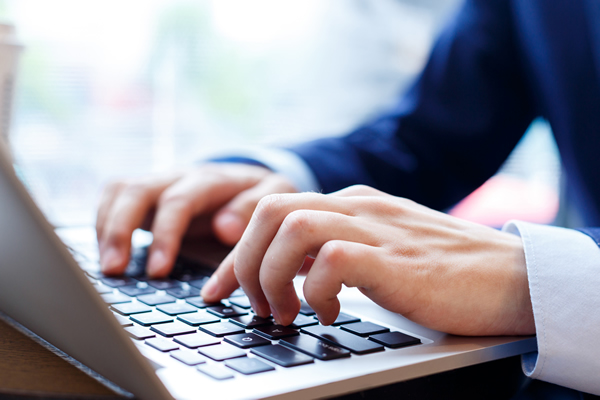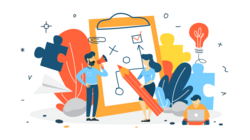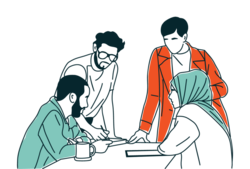ATD Blog
Prevailing Over Email Dilemmas
Fri May 11 2018

Bookmark
The benefit of email to trainers, consultants, and speakers, as well as everyone else, is abundantly clear. Email can, however, be detrimental to your productivity and privacy if used unwisely. The average person checks their email 15 times per day, which can take time away from actual professional development and slow productivity on tasks that really matter. Some studies have linked the overwhelming amount of email employees receive to increased levels of stress, and constantly checking email heightens those feelings.
Even while many jobs now include a heavy component of email correspondence as part of their job duties, many hours are still wasted on unnecessary or inefficient emails that can be gained back for constructive work. According to Lifewire, the typical office worker receives 121 emails per day! Regardless of the count, who among us does not receive more email than we can comfortably respond to? If you're handling several emails per hour, and each takes two or three minutes, that could be 10 or 20 minutes out of the hour, which could result in 2 to 2.5 hours per day—in a week, that's 10 hours or more; and in a year, that's 500 hours, or more than 12 work weeks!
To be productive at work, lower your stress levels, and safeguard your organization's privacy, I've addressed some email management issues below.
Spam Overload
Despite software filters and Internet service protocol (ISP) crackdowns, mass delivery from spammers is omnipresent. Jupiter Communications reveals there are many more email accounts in the U.S. than there are people! Spammers know this, and they know how to spread their junk everywhere.
Resist any temptation to respond to spam. Never even respond to a request for removal from the spammer's list. If you do, you only confirm that your email address is active, which will make you a future target. If the email is from a legitimate business, however, do hit the unsubscribe button. Maddening, isn't it? If you do decide to click on that picture of a cute fuzzy dog, do it from a home computer and never while connected to your organization's email servers.
Quick tips:
· Send any spam messages you receive to your ISP's abuse account—a and if you know how to, include the source code from the original spam message.
· Avoid posting your personal primary email address anywhere on the Internet, and do not use your work email address for nonofficial purposes.
· Be selective when registering online. Different websites have widely differing policies about the privacy of your email address. When in doubt, don't register.
· Whenever you receive email with lots of _X_es, all capitals, or excessive claims, don't waste a picosecond reading it. You can safely bleep anything that has lots of exclamation marks, assorted promises and come-ons, or if it looks like it was written by someone who pants for a living.
Make Your Emails Stand Out
When you do have to send emails, make sure you are composing messages you intend to be read and offer a vibrant subject line so that the receiver will read them. If you have trouble thinking one up, wait until you have first composed your message; then peruse what you've written, and voila! Two or three words (usually together) will jump out at you, and there's your subject.
Old Email Lives Forever
Not all email users know that deleting a controversial email message doesn’t necessarily get rid of it for good. Messages can be stored on your Internet server or your network server. Do not send emails you don't want your manager to see from your work email address.
Treat any email you ever send as having the potential to revisit you. If you write an email that could land you in trouble, expect it to come back to haunt you.
Make Time for Email—And Time Away From Email
Even without spam, you're still probably receiving dozens of emails per day. That's quite a bit of verbiage. To effectively manage your time and have a life, how do you handle this much email?
Early in the morning, before reading new messages, there are administrative tasks you can do to enhance your productivity in both sending and receiving email. These include arranging your inboxes and composing thoughts before going online.
As with all good writing, it's prudent to park outbound email messages for a while and revisit them before sending. With virtually all software and service providers, you have the option to store an email message as a draft.
Also, those who check their email every spare moment are often not doing such a great job. Avoid that trap ease off your obsessive email checking to enhance your offline effectiveness and lower your workplace anxiety—this will increase your productivity and performance.
The most effective trainers, consultants, and instructors are the ones who clear time for themselves as a result of being efficient with email (and, of course, other activities) throughout the course of the workday.
Sending Too Fast?
Have you ever angered or confused anyone because of an email? If you think the answer is "no," think again.
As a good general measure, before sending an email—especially to a co-worker or manager—consider the following guidelines as viable reasons to call rather than email. Call when the message is:
· intricate
· personal or emotional in nature
· completely novel
· requiring extended clarification
· seeking approval
· something that might have profound impact on the recipient.
Unless worded carefully, emails can seem impersonal, cold, even abrasive. It's not that you intended to ruffle any feathers, but in the haste of instant communication, ruffling happens!
Follow these tips to gain back productive time, ward off spammers, and avoid email drama in your workplace.
More from ATD




